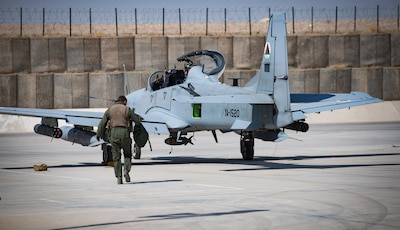By Jim Garamone DoD News, Defense Media Activity
WASHINGTON, Oct. 3, 2017 — The new South Asia strategy
should break the stalemate in Afghanistan and make the United States, its
allies and its partners more secure, the chairman of the Joint Chiefs of Staff
told the Senate Armed Services Committee today.
Marine Corps Gen. Joe Dunford told the panel he agreed with
the NATO commander in Afghanistan, Army Gen. John W. Nicholson, that the effort
in the country was stalemated. He noted that Defense Secretary Jim Mattis had
said the coalition in the country was not winning.
This situation developed after the NATO Resolute Support
mission in the country transitioned from the International Security Assistance
Force to an advisory effort.
"Since January 2015, we have advised and accompanied
Afghan special operations units at the tactical level, but our advisory effort
for conventional forces has generally been limited to the Afghan corps and
institutional level," the general said in testimony. "We also reduced
the aviation, artillery and intelligence support provided to the Afghan
forces."
The conventional forces did their best, but they weren't
prepared to succeed in combat against the Taliban, al-Qaida and the Islamic
State of Iraq and Syria, Dunford said. "My military assessment is that we
drew down our advisory effort and combat support for the Afghan forces too far
and too fast," he told the senators. "As a result, the Taliban
expanded territorial and population control and inflicted significant casualties
on the Afghan army and police, while the campaign lost momentum."
Targeted Solutions
Soon after taking office, Mattis asked for a detailed review
of operations in the country and for officials to determine the root causes for
the lack of progress in Afghanistan. "And he directed we provide targeted
solutions," the chairman said. The result was a new operational approach
designed to break the stalemate.
"The new approach supports the president's broader
strategy by expanding our advisory efforts to the tactical level, increasing
the combat support we provide through our Afghan partners and enhancing
authorities to our commanders," Dunford said.
The construct is designed to improve the ability of Afghan
forces to conduct offensives, defend critical areas and reduce the casualties
they are taking. "The emphasis is on providing effective support to the
over 300,000 Afghans we have trained and equipped, so they can secure their own
country," the chairman said.
The plan follows Afghan President Ashraf Ghani's plan to
reorganize the Afghan force. This will mean expanding the nation's special
operations capabilities while reducing less-effective units. "We will also
continue our efforts to develop a capable and sustainable Afghan air
force," the general said. "Finally, we'll enhance and expand our own
counterterrorism operations in the region."
This means that experienced, senior coalition leaders will
be advising Afghan commanders where it will do the most good -- at the brigade
or even kandak level. Under the previous operational construct, advisors would
limited to the corps level.
Taking the Fight to the Enemy
"Their efforts will be fully enabled by the support and
authorities needed for the Afghans to take the fight to the enemy," the
general said. Coalition nations will provide air support, intelligence
expertise, command and control capabilities, logistics and other help as
needed.
"As we implement the strategy, we're also tackling
corruption, the single greatest roadblock to progress," Dunford said.
The military objectives are clear and achievable, the
general said. This, he added, should "defeat ISIS and al-Qaida in
Afghanistan and ensure other terrorist groups are unable to launch attacks
against the homeland, U.S. citizens or our allies; further develop Afghan
forces that are capable of managing residual violence with limited
international support; support President Ghani's effort to secure key
population and economic centers; and provide an enduring counterterrorism
partnership with Afghanistan to protect our shared interests in South
Asia."
This is aimed at showing the Taliban that the Afghan
government has partners who are committed to the effort for the long run, the
chairman explained. The enemy needs to understand they cannot win a battlefield
victory, he added, and that it is in their best interests to join the Afghan
government in building a new nation.








No comments:
Post a Comment